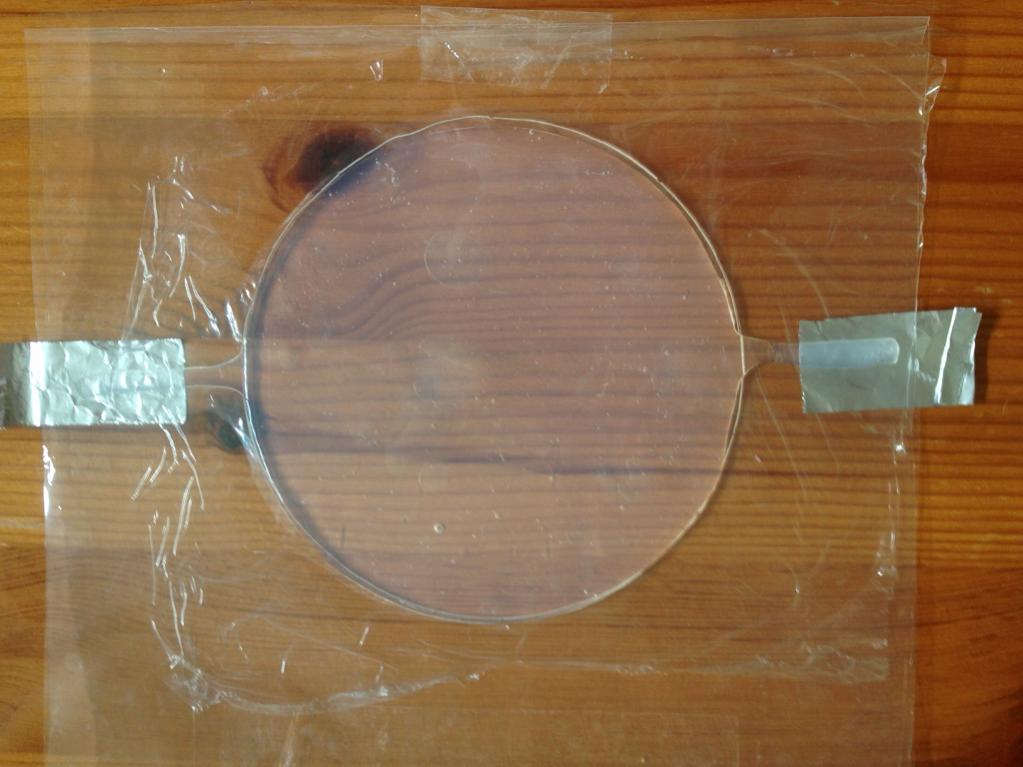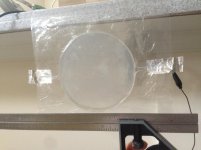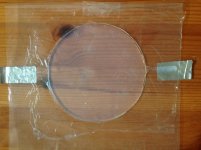Hi. This may have been posted before but here I go. I gel ionic speaker. Could be very useful a couple of generations on
Bio-inspired speaker uses clear gel to play music - tech - 29 August 2013 - New Scientist
Regards /Bo
Bio-inspired speaker uses clear gel to play music - tech - 29 August 2013 - New Scientist
Regards /Bo
That is pretty interesting, the concept is similar to electrophoresis used to move and separate different molecular weight substances in gels for DNA sequencing. Applying a sine wave makes it move back and forth and out comes sound. Clever. I like how you can see the different eigenmodes form on the drum head pattern of the membrane as it goes through frequency sweep. You can probably have multiple gel electrodes at different spots to compensate for these modes and reduce membrane breakup.
I've been making hydrogels lately trying to use them as a record cleaner. Not working so well.  Maybe I need to make a speaker, instead.
Maybe I need to make a speaker, instead.
Wondering how this works. Why the insulating sheet between the two gels? Isn't this a capacitor? Will the gel vibrate on its own? I gotta try some salt water in the gels to find out.
Wondering how this works. Why the insulating sheet between the two gels? Isn't this a capacitor? Will the gel vibrate on its own? I gotta try some salt water in the gels to find out.
I am guessing the separator serves as the insulator to cause the two gel layers themselves to be the planar electrodes otherwise there would be a linear potential from the gel leads on the edges. The electrical field perpendicular to the plane causes electrophoretic mobility (pressure) of the gel substance to exert force because it is blocked by the rubber insulator. You can't get force from pressure without a wall for pressure to act on. I think this is a simple experiment we can all do at home. The gel can be made from PVA glue mixed with liquid laundry detergent and salt. Wash it in water after the detergent polymerizes the PVA to gel. Sandwich some plastic sandwich wrap between the two gel layers and then attach some speaker leads to each side of gel. It should wiggle under signal from amp. May need upwards of 15 to 30 volts though.
Yes, exactly. I use Borax to polymerize the glue. A little corn starch added makes for a tougher polymer.
I've already tested the gel made with tap water, resistance is very high. Will try with salt water. I also suspect high voltage will be needed. A tube output transformer run backwards may do the trick. Or I could dig up a 70V transformer for commercial sound.
I've already tested the gel made with tap water, resistance is very high. Will try with salt water. I also suspect high voltage will be needed. A tube output transformer run backwards may do the trick. Or I could dig up a 70V transformer for commercial sound.
Agar gel speaker attempt
I had to try this speaker, so I made one out of agar gelatin (I think seaweed based) and salt. I made a circular gel dam out of a rolled up string of silly putty and then poured the hot gel into the dam. Once hardened, I placed two of them in a sandwich with plastic food wrap in between. I covered both sides with a firmer sheet plastic to keep the gel from drying out and used aluminum foil as electrode strips.
So how does it sound? It doesn't quite work yet. I will need to add more salt and use a step up transformer I think. When I connect it to a 45 watt amp, nothing, but when I connect 120vac power mains to it I hear a slight 60 Hz hum. So it does move but not very efficient. Probably how thin the insulation is, and amount of salt loading are critical. However, the mechanics and substance/substrate for making it is all there.
Fun, but probably not going to pursue any further - satisfied my curiosity enough...
I had to try this speaker, so I made one out of agar gelatin (I think seaweed based) and salt. I made a circular gel dam out of a rolled up string of silly putty and then poured the hot gel into the dam. Once hardened, I placed two of them in a sandwich with plastic food wrap in between. I covered both sides with a firmer sheet plastic to keep the gel from drying out and used aluminum foil as electrode strips.
So how does it sound? It doesn't quite work yet. I will need to add more salt and use a step up transformer I think. When I connect it to a 45 watt amp, nothing, but when I connect 120vac power mains to it I hear a slight 60 Hz hum. So it does move but not very efficient. Probably how thin the insulation is, and amount of salt loading are critical. However, the mechanics and substance/substrate for making it is all there.
Fun, but probably not going to pursue any further - satisfied my curiosity enough...
Attachments
Perhaps the membrane needs to be porous similar to the insulating sheets used in lithium ion polymer batteries.
Good idea, I will give that a try. A Gore Tex membrane may be perfect for this. What is a cheaper more readily available substitute? I could just put a bunch of pinpricks on the plastic food wrap - that will act more like distributed point sources rather than an area.
Also you have the negative and positive terminals effectively at the same point. this would cause the electron flow to travel the shortest distance between the two. One of the other pics showed a wide ring with one conductor on the inside and the other on the outside. Doing it this way would help force a much more even charge between the two gel 'plates'.
Also you have the negative and positive terminals effectively at the same point.
Not sure why you say this?
The gel discs have a conductive "tail" that leads from the main disc. Each one forms the terminal to the electrical input which leads out each side diametrically-opposed and on separate sides of the insulating plastic film.

This is exactly the same electrode layout used by the researchers.
- Status
- This old topic is closed. If you want to reopen this topic, contact a moderator using the "Report Post" button.
- Home
- Loudspeakers
- Full Range
- Gel speaker

